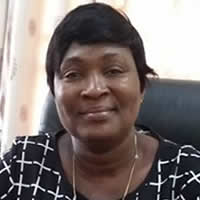Education
Facilities
There are a total number of 186 basic schools both privately (84) and publicly (102) owned in the District. Out of this number, 87 are pre-schools, 58 primary schools and 41 Junior High Schools. There are 4 Senior High Schools, one College of Education, two tertiary educational institutions and one Post Secondary. Distribution of the schools into quantity and ownership is showed in the table below.
Despite the efforts made so far in the establishment of schools and the provision of school infrastructure, more still needs to be done to improve access to education in the District. More schools buildings are particularly needed in the rural communities where pupils are still under trees and wooden structures. A lot more has to be done to improve the infrastructure of the existing schools to enable them deliver quality education.
Absence of places of convenience has the potential of driving away pupils, especially the girl child, from school. It is however, unfortunate to note that some of the schools have no access to toilet and urinal facilities.
Unavailability of electricity in the basic schools is also a major problem, even though most of the principal towns and villages have access to electricity. Majority of the schools have not been provided with electricity. This may seriously affect the ICT Policy at the Basic Schools.
Another breach of the basic access to schools is the fact that the District’s 87 pre-schools are beset with lack of recreational facilities which are essential prerequisites for attracting children to school.
Figure 4: Educational Facilities Map
Enrolment Level (from 2014-2017)
The table below shows the enrolment level of the District for the various categories for basic schools from 2014/2015 to 2015/2016 academic years.
From the table, there was an increase in enrolment for all the levels except JHS from 2014/2015 academic year and 2015/2016 academic year. Enrolment JHS level however decreased in the 2016/2017 academic year. This could be attributed to high rate of teenage pregnancy being experienced in recent times across basic schools in the district.
With respect to Gender Parity Index (proportion of male to female in schools), all the levels have more males than females enrolled in schools. This calls for gender improvement action plan to help bridge the gender parity gap in schools from the basic to secondary levels.
Staffing Position and teacher-pupil ratios
The District has a total number of 656 teachers for all levels. A little over Ninety percent (90%) of this number are trained. Most of the untrained teachers (58%) teach at the SHS level. It is refreshing to indicate that the District has a little over 96 percent of the basic level teachers being trained, an indication of likely quality education in the district, all other things being equal.
The high pupil-teacher ratio at the pre-school level is a demonstration of inadequate teachers. These result in pressure in classes at the pre-school level. This calls for training of these teachers to help lay a good foundation for our school children.
Literacy status of the District
A total of 26,839 persons can be found within the ages of 11 years and older in the district (72% of the District’s Population). 86.2 percent of this number is literate while the rest (13.8%) are not. Out of the total male population 11 years and older (12,683), 92 percent are literate while the rest (8%) are non-literate. On the other hand, out of the total female population aged 11 years and older (14,156), 80 percent are literate while the rest (20%) are non-literate.
Performance of the District in B.E.C.E
The performance of the District in B.E.C.E over the years has not been encouraging. The District recorded a score of 70 percent in 2014 but this decreased to 67.3 percent in 2015 (a decrease of 2.7%) and further experienced a sharp decline to 62.1 percent in 2016.
This continuous trend of decline is very worrisome. The table below illustrates the performance of the district over the years.
Challenges of Education in the District
i. Lack of residential accommodation for teachers
ii. Inadequate school infrastructure at the Basic level
iii. High rates of school drop-outs
iv. Inadequate furniture
v. Inadequate teaching and learning materials
84 | Akwapim South District Medium
Term Development Plan (2018-2021)
vi. Unavailability of electricity in some basic schools
vii. Pre-schools lack recreational facilities which are essential prerequisites for attracting children to school
viii. Negative parental attitude toward education
ix. No office accommodation for the District Directorate
Date Created : 11/23/2017 2:33:23 AM





 facebook
facebook twitter
twitter Youtube
Youtube TOLL FREE 0800 430 430
TOLL FREE 0800 430 430 +233 593 831 280
+233 593 831 280 GPS: GE-231-4383
GPS: GE-231-4383 info@ghanadistricts.com
info@ghanadistricts.com Box GP1044, Accra, Ghana
Box GP1044, Accra, Ghana